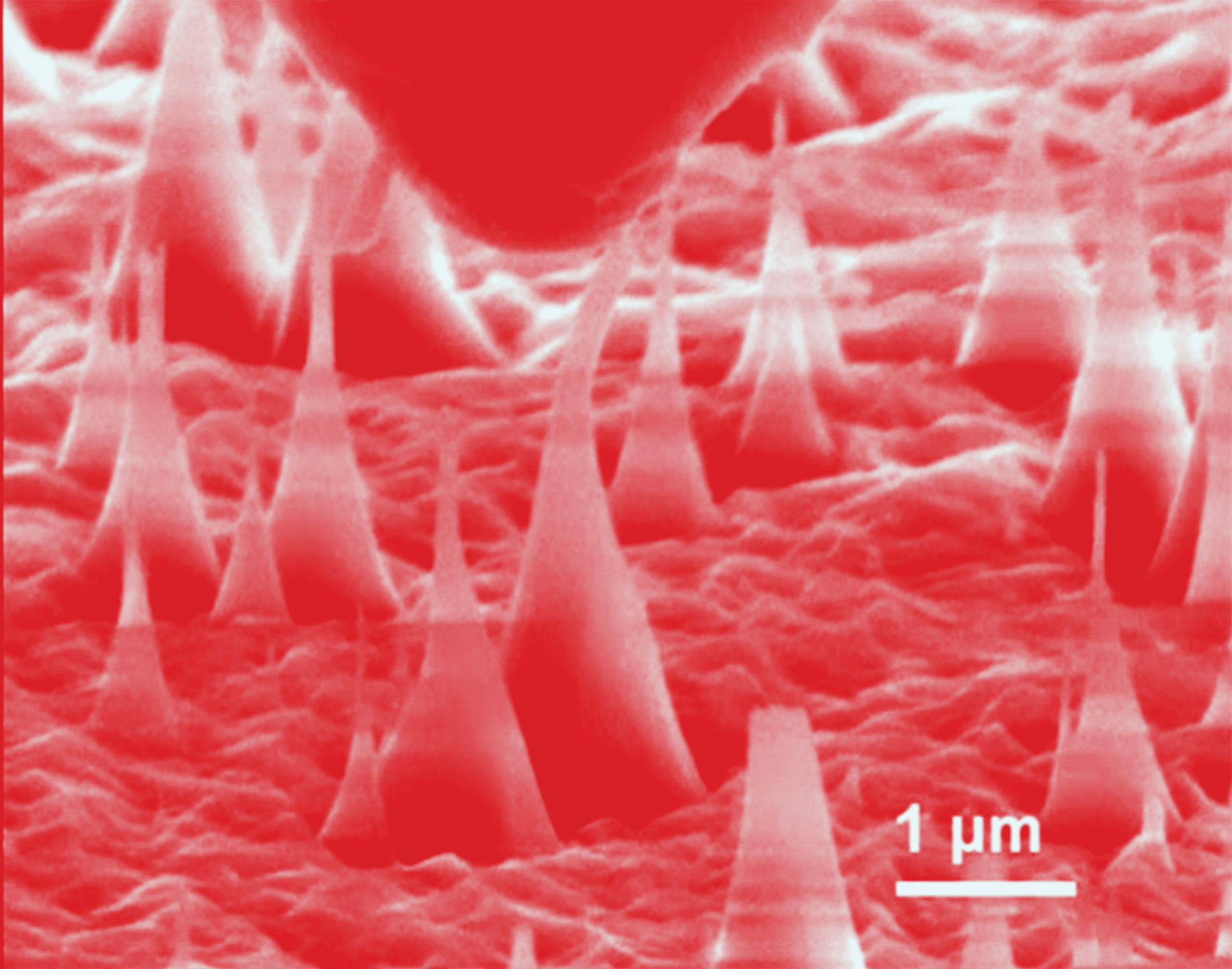
Diamond is well known to be the strongest of all natural materials, but that strength comes at a price: brittleness. So an international team of researchers from MIT, Hong Kong, Singapore, and Korea was surprised to discover that when grown in extremely tiny, needle--like shapes, diamond can bend and stretch, much like rubber, and snap back to its original shape.
The team showed that narrow diamond needles, similar in shape to the rubber tips on the end of some toothbrushes but just a few hundred nanometers across, could flex and stretch by as much as 9 percent without breaking and then return to their original configuration. Ordinary diamond in macroscopic form stretches much less than 1 percent.
Putting crystalline materials such as diamond under very large elastic strains, as happens when these pieces flex, can change their mechanical, thermal, optical, magnetic, electrical, electronic, and chemical reaction properties in significant ways. The process could be used to design materials for specific applications through what’s known as “elastic strain engineering,” the team says.
The diamond needles, which were grown through a chemical vapor deposition process and then etched to their final shape, were observed in a scanning electron microscope while being pressed with a standard diamond-tip “nanoindenter.” The team also did simulations to interpret the results and was able to determine precisely how much stress and strain the needles could accommodate.
The unexpected find was reported this year in Science by senior author Ming Dao, a principal research scientist in MIT’s Department of Materials Science and Engineering. He says the results could open the door to a variety of diamond-based devices for applications such as sensing, data storage, actuation, biocompatible in vivo imaging, optoelectronics, and drug delivery. For example, diamond has been explored for delivering drugs into cancer cells, and if the tips are flexible, they could be more resistant to breakage.
Keep Reading
Most Popular
How scientists traced a mysterious covid case back to six toilets
When wastewater surveillance turns into a hunt for a single infected individual, the ethics get tricky.
The problem with plug-in hybrids? Their drivers.
Plug-in hybrids are often sold as a transition to EVs, but new data from Europe shows we’re still underestimating the emissions they produce.
What’s next for generative video
OpenAI's Sora has raised the bar for AI moviemaking. Here are four things to bear in mind as we wrap our heads around what's coming.
Stay connected
Get the latest updates from
MIT Technology Review
Discover special offers, top stories, upcoming events, and more.